After the Jewish Tour of Lisbon, Daniel recommended a traditional Portuguese restaurant called Bom Jardim. Although they served a variety of different foods, the are known especially for their rotisserie chicken with Peri Peri marinade. We ordered chicken, grilled sea bream, potatoes, rice, salad and creamed spinach – it was all great. While we were there, we realized this narrow alley, which was mostly taken up by the restaurant patio, was a high traffic area. Two buskers came by: a singer with his guitar, and a breakdancing troup. There were also several people begging for money, and a man with his two dogs. He would take the plates when people were finished their meals and feed the bones to his dogs. It was unexpectedly a very lively environment to eat lunch in.
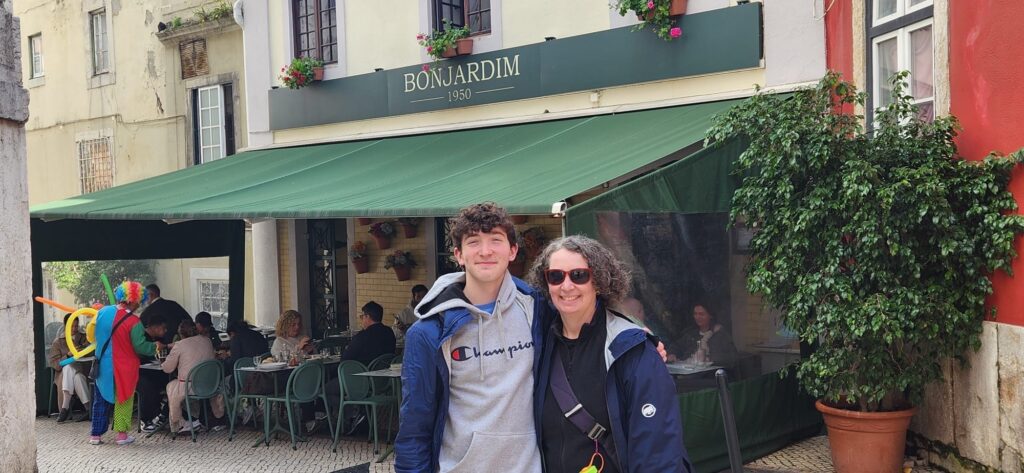
We spent the rest of the afternoon exploring the city on foot, giving our calf muscles a workout walking up and down all of those hills. We headed over to an area called the LX Factory. It reminded us of a cross between Granville Island in Vancouver and the Distillery District in Toronto. There was a large building with just over 30 concept shops, as well as studios that people in the arts community could rent out to work in.
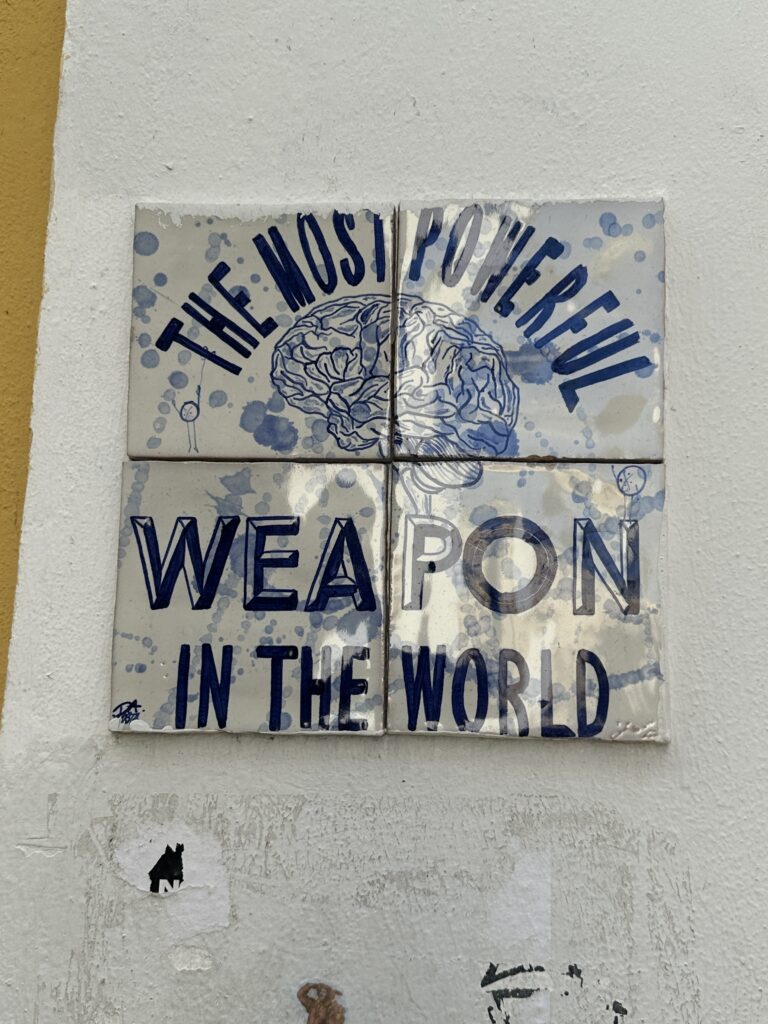
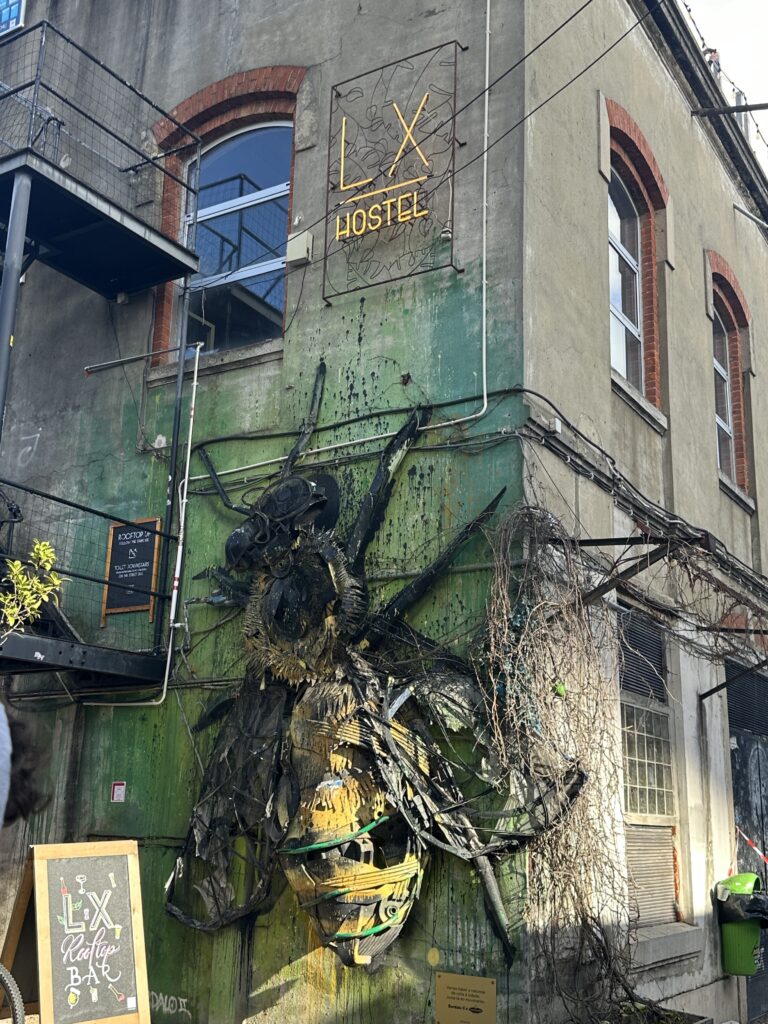
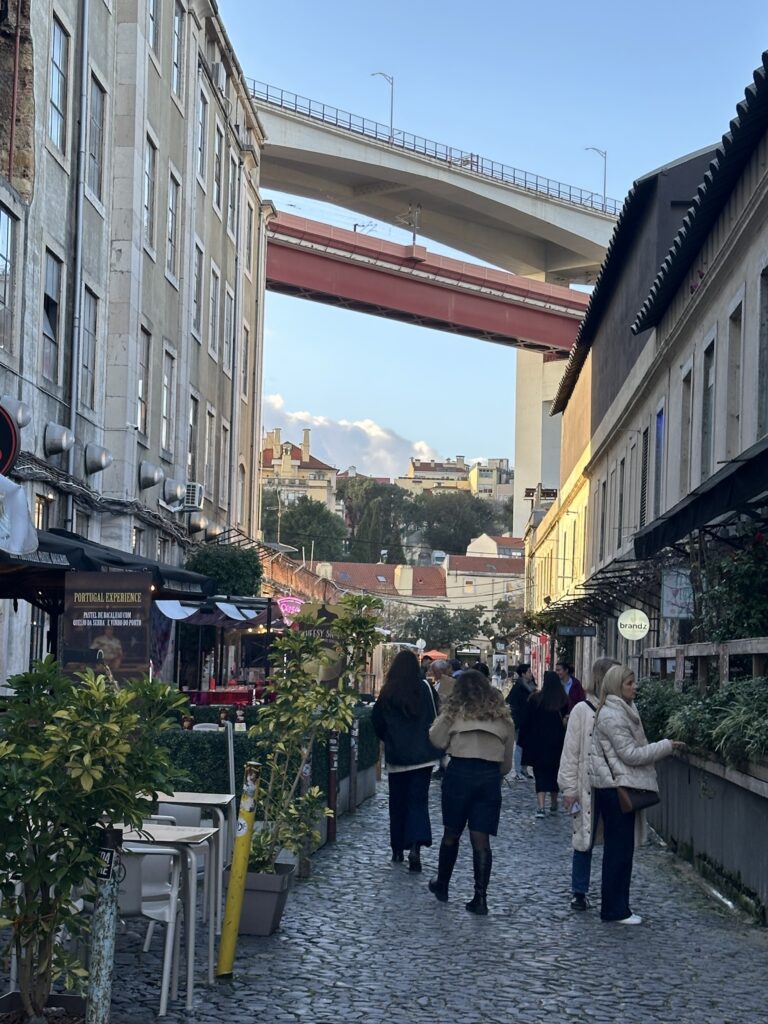
There were also a ton of restaurants and bars and clubs, and it was hopping at night. We bought some locally made artisanal soaps and shampoo bars, and we really enjoyed seeing the artwork that people were creating.
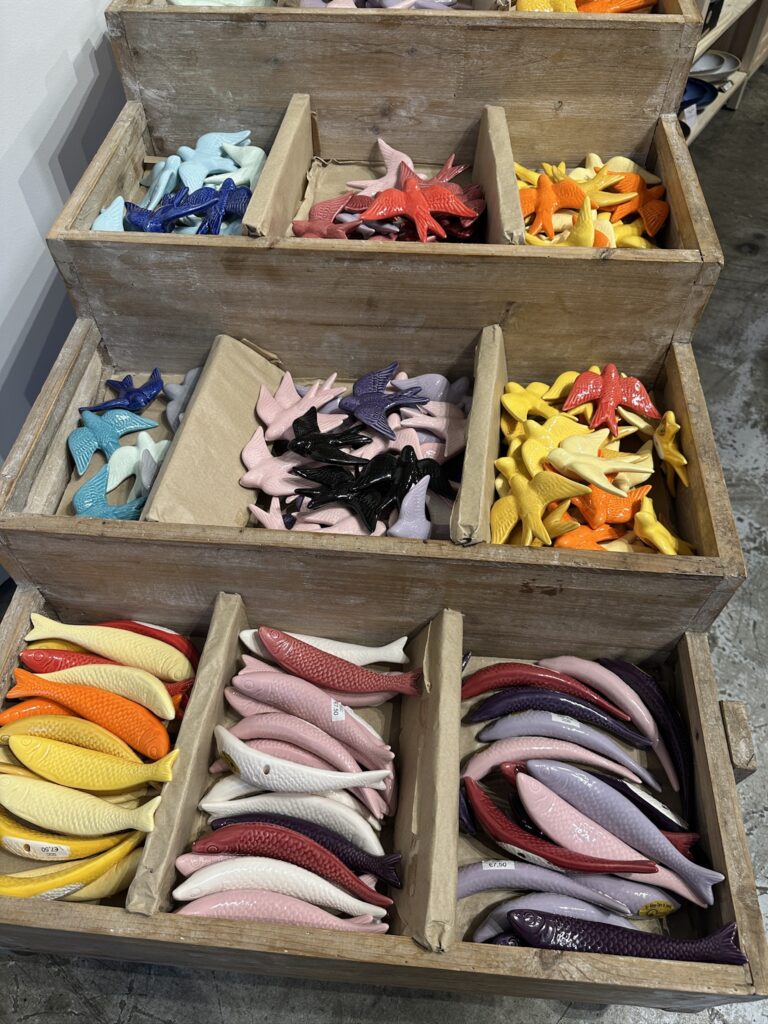

We especially loved this one artist named O Gringo. He is originally from France, but lives in Portugal now. He incorporates tiles, images of people and superimposes traditional Atelejos (traditional Portuguese tile) design patterns over the bodies of the human images.
From Artsper:
O Gringo, aka Bastien Tomasini, is a contemporary mix media artist born in 1988 in Nice on the French Riviera. Throughout his travels, he discovered a passion for preserving the memory of iconic places, magnificent settings, and historical pieces. He draws inspiration from the ancestral tradition of Azulejos, those small hand-painted enameled tiles that adorn the facades and interiors of Mediterranean buildings. O Gringo’s mosaics incorporate the patterns he encounters during his various expeditions in the land of Azulejos, revealing fragments of his history. He often employs the human body as a canvas to express his art, weaving tales of love in which spiritual evocation, history, and modernity converge.
O Gringo’s artistic process always begins with thorough historical research, during which he carefully selects titles for his works to tell meaningful stories and convey emotions through his art. He immerses himself in historical locations that inspire him, such as the splendid National Azulejo Museum in Lisbon, where he memorizes every detail he uncovers on the walls to graphically and historically enrich his love story.
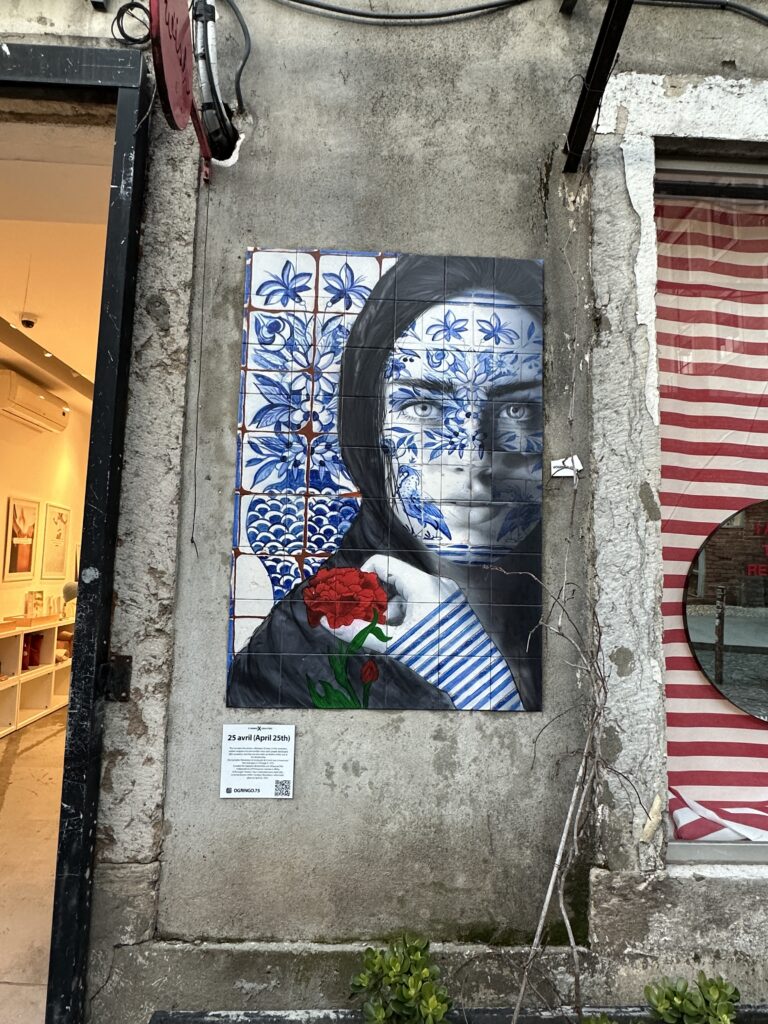
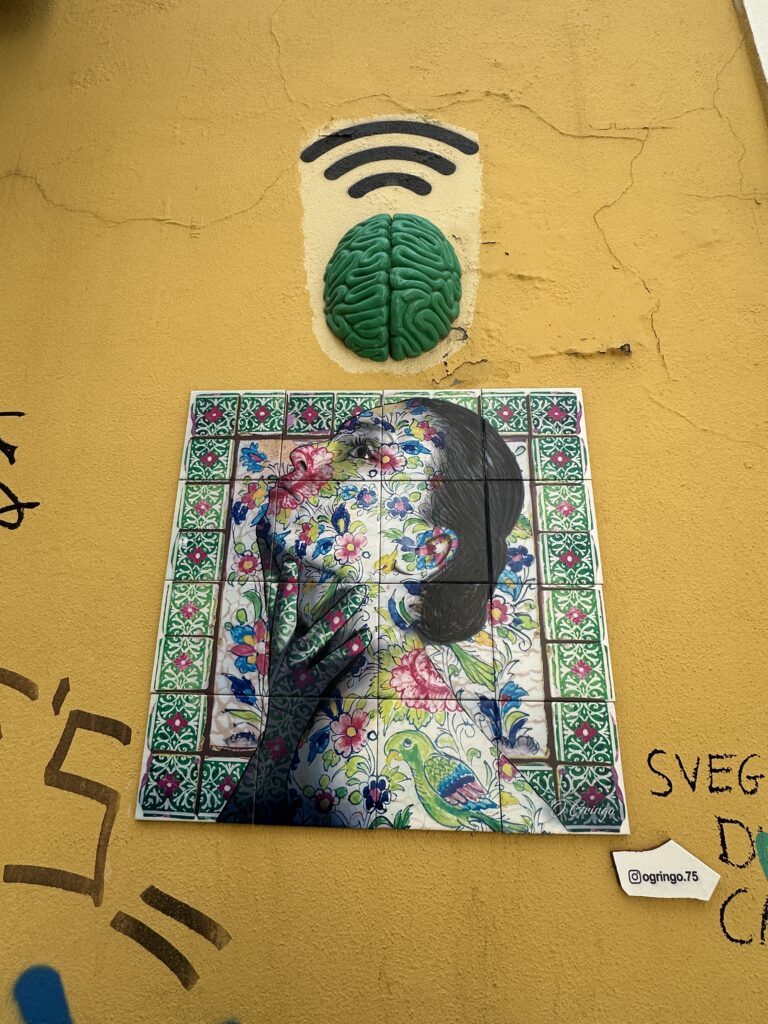
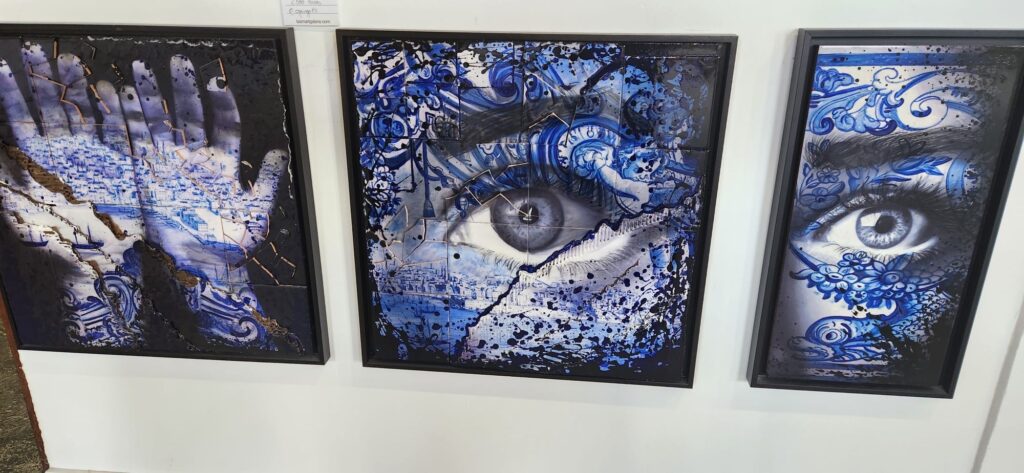
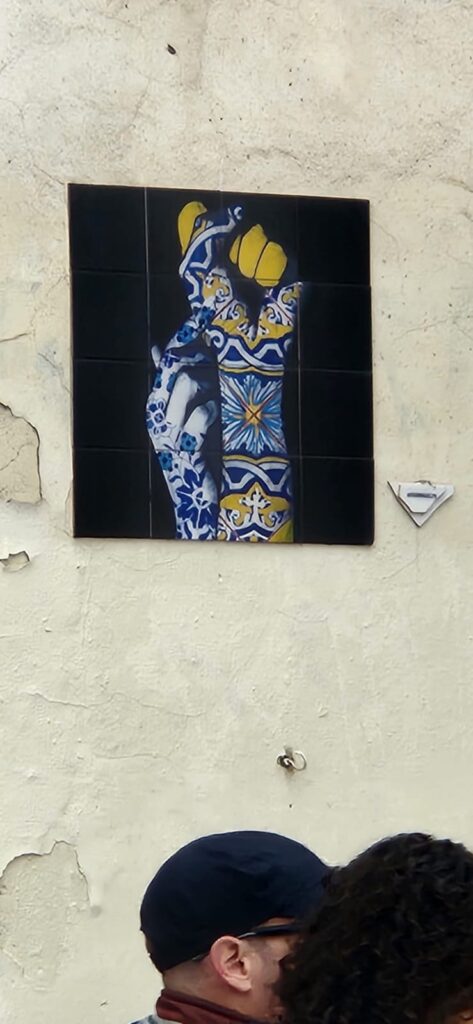
After the LX Factory, we headed to a restaurant our Airbnb host recommended called Santa Bica. It was up a funicular path up a steep hill. We tried some interesting cocktails and mocktails, Teva had one of the top 5 beef dishes of his life, and we enjoyed all of the amazing dishes that we tried. The server was very chatty, as it wasn’t too busy, and he inevitably started talking about politics. The government of Portugal actually fell that day and he explained to us how the Portuguese governmental system works. There was a non confidence motion because it was discovered that the prime minister was caught for a second time in a corruption scandal involving conflicts of interest concerning companies he owned with government contracts. They will go to the polls in May. He figures the same guy will be re-elected in spite of the charges of corruption. It seems almost everywhere is becoming like this now. I will be watching for the outcome of this election with interest now. I am curious to learn more – as if I need to get invested in another broken political system to make me furious; I already have more than I can handle with Israel, Canada and the US.
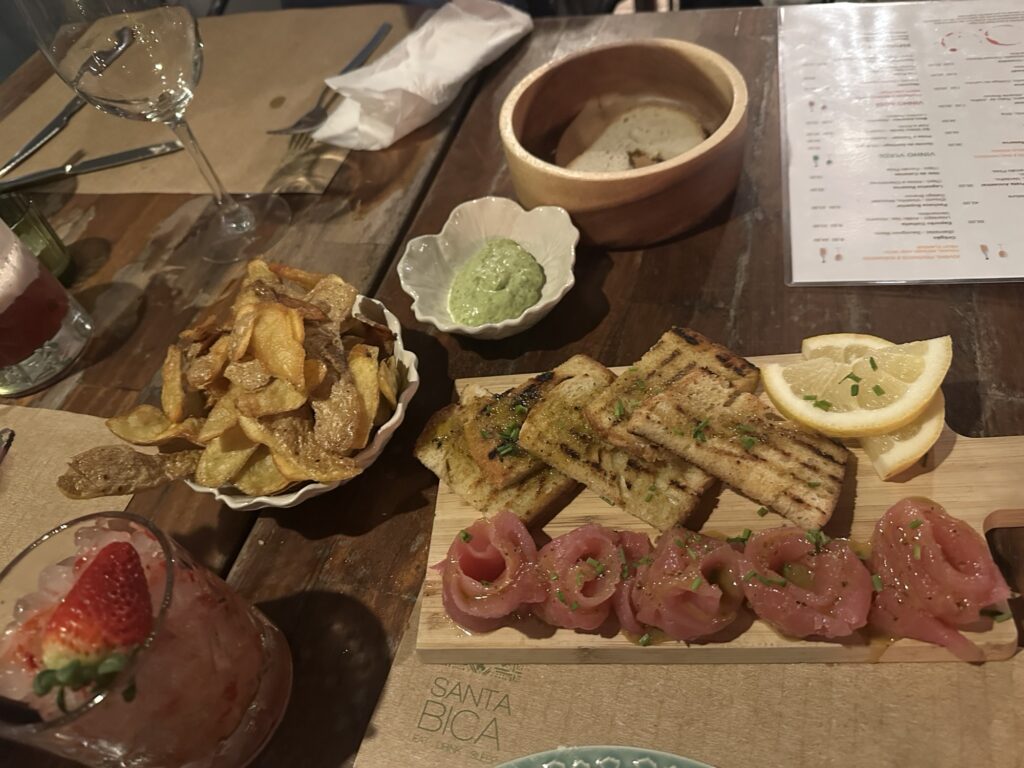
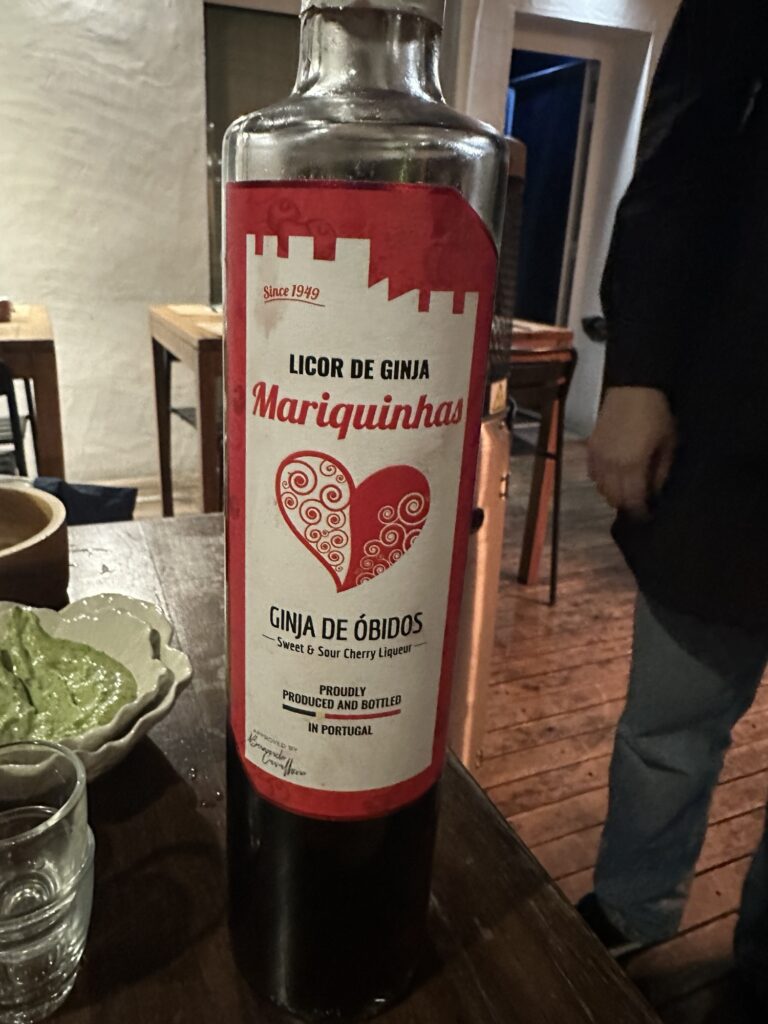
Great food, great conversations with the two servers, and at the end of the night they brought us some small shots of some traditional Portuguese alcohol – Ginjha (the cherry liquor we were offered after the bike tour) and a Portuguese version of Cognac. I was not crazy about the latter, and I think I had a bit of a reaction to the former – not too bad, but I wasn’t eager to try it again. Aubrey is bringing a bottle home from duty free so I may try it in my own house when I have nowhere else to be in case I have a reaction.
On the way home, we stumbled upon the famous “pink street” with the suspended umbrellas. Pretty kitschy and fun.
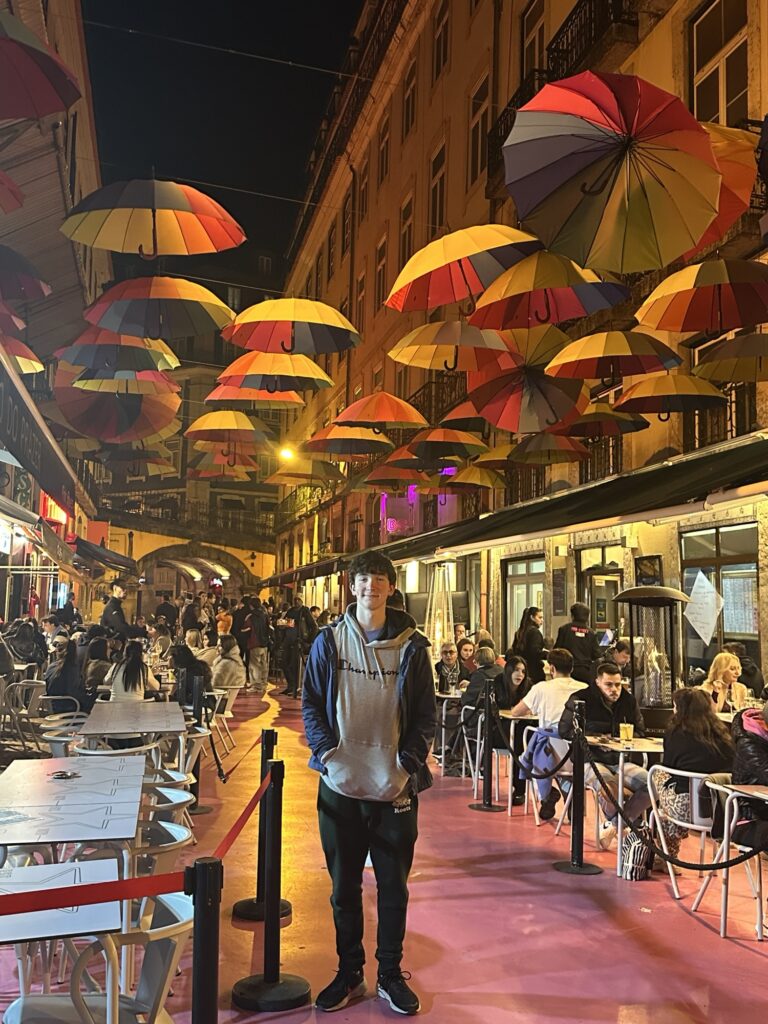
Another great day in Lisboa 🙂
